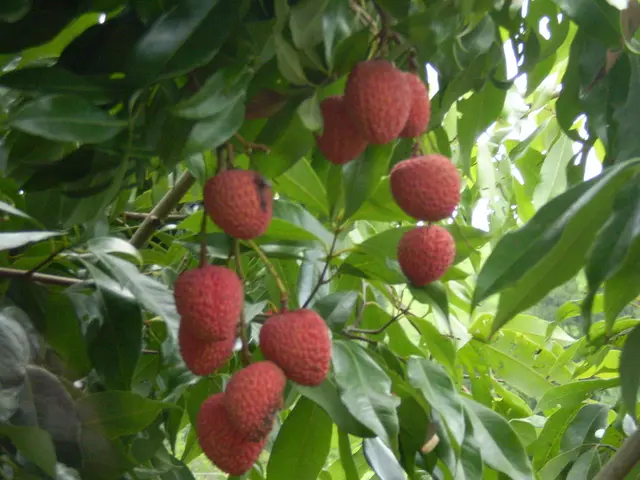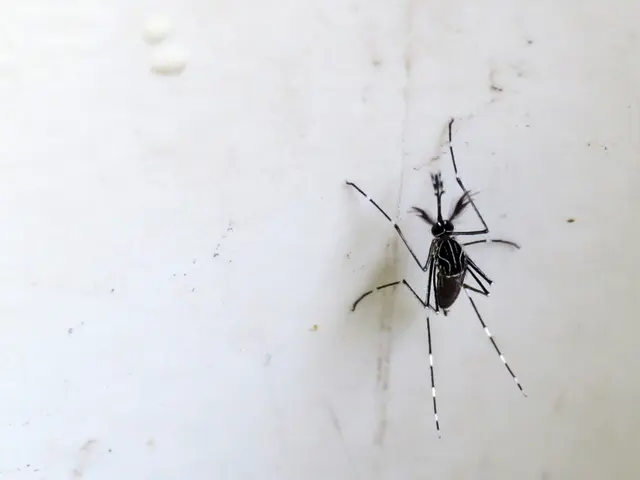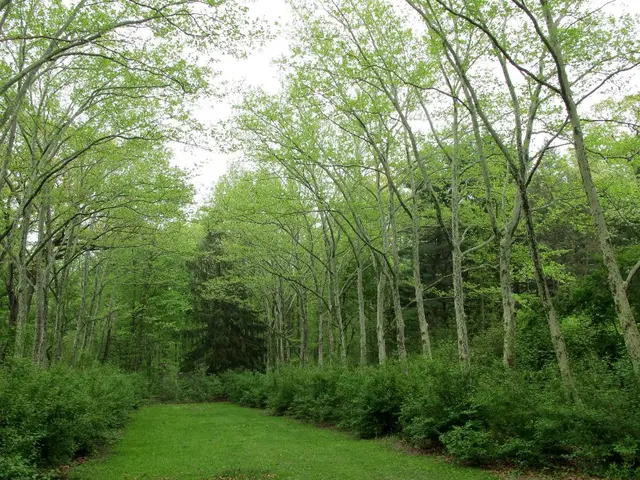7 Types of Grass to Sow in Autumn for a Vibrant and Robust Yard
Preparing your lawn for the incoming chill? Fall is the perfect time for it! This season hosts ideal conditions for planting grass – cool temperatures and plentiful moisture create a lawn that's green and thriving by spring. Let's dive into some tips and top choices for a luscious lawn makeover!
Ready your lawn for the fall planting season
Fall grass planting calls for smart planning and execution, so here's a guide to get that coveted, envy-worthy lawn.
Timing is crucial
For best results, seed your lawn about 6 to 8 weeks before the first frost. This interval gives seeds the perfect growing conditions before winter sets in. Cool-season grasses particularly bloom in cooler temperatures, moderate sunlight, and moisture, which are abundant during fall.
Prepare the soil like a pro
Healthy soil lies at the root of a beautiful lawn. Start by loosening up any compacted soil using an aerator, allowing water, nutrients, and air to penetrate deeply. This is especially important for cool-season lawns, as it promotes better root growth.
Remove debris and weeds for a clean, fertile bed ready for seeds. If your soil is too acidic, consider applying lime to balance the pH between 6.0 and 7.0. Soil testing saves time and ensures the best results.
Choose the right seed
Picking the perfect grass seed is vital for success. Select a grass variety that caters to your climate, soil, and lawn needs. Cool-season grasses, like Kentucky Bluegrass and Tall Fescue, work best for fall, particularly in cooler climates.
For shaded areas, go for fine fescue or Hakone grass since they thrive in low-light conditions. Opt for high-quality, region-labeled seeds for the best outcomes.
Fertilize wisely
A quality fertilizer provides your grass with the nutrients necessary for healthy growth. Use a starter fertilizer rich in phosphorus, supporting strong root development for cool-season grasses. A soil test can pinpoint deficiencies and help you choose the right fertilizer, optimizing outcomes. Remember to stick to the suggested application rates to prevent over-fertilizing, which can damage young seedlings.
Know when (and how) to water
Consistent watering is a must for grass seed germination and growth. Keep the soil moist by watering lightly and frequently in the initial stages. With growth, switch to deeper and less frequent watering to foster deep root development. Shun creating puddles or saturated soil, as this can promote fungal diseases. Sprinkler systems and timed watering schedules can help ensure even distribution.
Mulch for added protection
Newly planted grass seeds require protection from birds and direct sunlight. A thin straw or mulch layer guards seeded areas from these elements while also helping retain soil moisture for consistent germination. Mulch is especially useful in areas prone to erosion like slopes, keeping seeds from washing away. Choose eco-friendly, biodegradable straw to maintain soil health.
Space out the seedlings
For a successful, uniform lawn, sow grass seed evenly to prevent overcrowding. A seed spreader ensures even distribution, preventing bare spots. Overcrowded seedlings compete for resources, resulting in a patchy, exhausted lawn.
Top Grass Types for Fall Planting
The grass you decide to plant this fall depends on your local climate, soil conditions, and intended lawn use. Here are several top choices worth considering for a picturesque autumn lawn:
1. Zoysia Grass
Known for its dense texture and minimal upkeep, Zoysia Grass is a warm-season grass that can be planted in warmer climates during fall.
Advantages:- Requires low maintenance- Inhibits weed growth- Tolerates heat and foot traffic- Reduced mowing frequency
Tips:- Plant in well-drained soil, ensuring full exposure to sunlight.- Keep soil warm and moist to encourage root development before frost.
2. Kentucky Bluegrass
Known for its bright color, fine texture, and self-repairing abilities, Kentucky Bluegrass makes an excellent cool-season pick for fall planting.
Advantages:- Self-repairing with rhizome growth- Forms a thick, lush lawn- Handles moderate foot traffic
Tips:- Pair it with other cool-season grasses for a robust lawn.- Ensure the soil is well-drained and rich in nutrients.- Water regularly during establishment.
3. Bermuda Grass
Bermuda grass is a warm-season grass often grown in southern regions, ideally sown in early spring. However, overseeding can help prepare your lawn for a smooth transition in spring.
Advantages:- Fast growth rate- Endures heavy foot traffic- Thrives in sunlight
Tips:- Overseed with Bermuda grass in early fall.- Provide ample sunlight and moisture for growth.- Protect young grass from frost with mulch if necessary.
4. Tall Fescue
Tall Fescue is a versatile, cool-season grass with deep roots, making it drought-tolerant and resilient.
Advantages:- Deep roots promote drought tolerance- Adapts to both sunlight and shade- Low maintenance once established
Tips:- Plant Tall Fescue seeds in early to mid-fall.- Use a starter fertilizer for strong root development.- Water deeply and frequently during establishment.
5. Ryegrass
Ryegrass is a fast-growing cool-season grass often used for patchwork and temporary lawns. It thrives in cooler climates.
Advantages:- Rapid germination for patchy lawn repair- Adds bright color during fall and winter
6. Bahiagrass
Bahiagrass is a warm-season grass fitting for sandy soils, prize-winning for its low maintenance.
Advantages:- Low maintenance- Drought and heat resistance- Tolerates poor soil conditions
7. Hakone Grass
Hakone Grass, also known as Japanese forest grass, showcases unique appeal with its arching foliage, making it suitable for ornamental lawns or gardens.
Advantages:- Slow growth, offering an exceptional aesthetic touch- Well-suited for partial shade- Low-maintenance once established
Conclusion
Fall grass planting paves the way for a lush, inviting lawn ready to dazzle by spring. Choosing the right grass variety and following essential planting tactics lay the foundation for a thriving green space. Whether your heart desires the resilience of Zoysia, the sophistication of Kentucky Bluegrass, or the adaptability of Tall Fescue, embrace the season for a transformed lawn filled with vibrancy and charm.
With proper care including consistent watering, fertilization, and mulching, your new grass will grow even in extreme temperatures. Maintain optimal density and shade tolerance for a lawn that thrives in both heat and cooler months. Enjoy the transformation as your lawn becomes the envy of the neighborhood!
Start your lawn's fall transformation with the appropriate choice of grass, considering factors such as climate and soil. For cooler regions, consider cool-season grasses like Kentucky Bluegrass or Tall Fescue, while warm-season grasses such as Zoysia, Bermuda, and Ryegrass are ideal for warmer climates. Home gardeners can also opt for low-maintenance options like Bahia grass or the ornamental Hakone grass to enhance their home-and-garden lifestyle.
To achieve a luscious lawn in the coming months, prioritize preparing the soil, choosing the right seed, and following smart planting practices. Timing, fertilization, watering, and ensuring proper seedling spacing are crucial for a thriving grass crop. Prune your lawn and garden care regime this fall to set it up for success through the winter and into spring. With a little effort, you'll have a lawn that will leave your neighbors envious of your new lifestyle.








